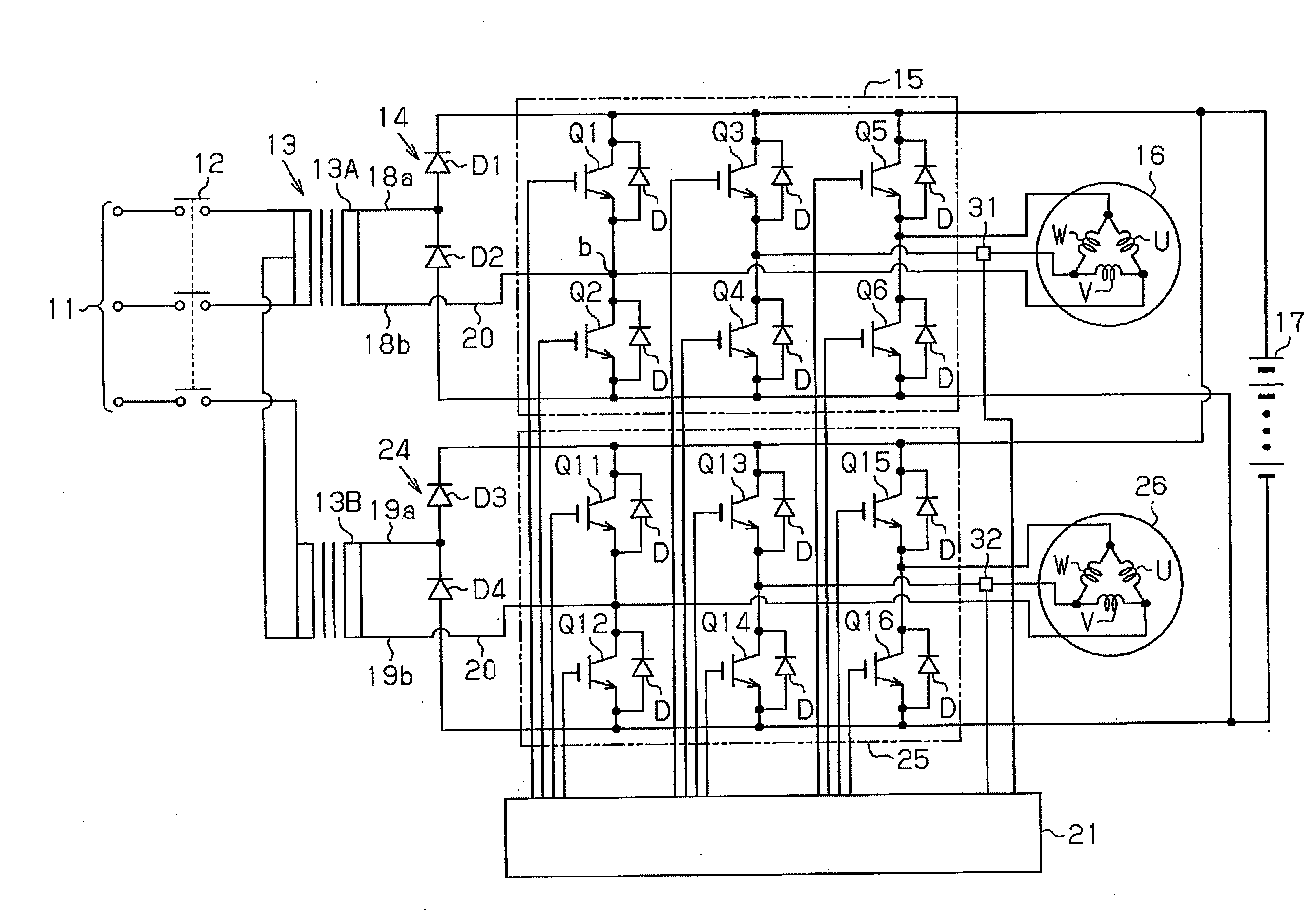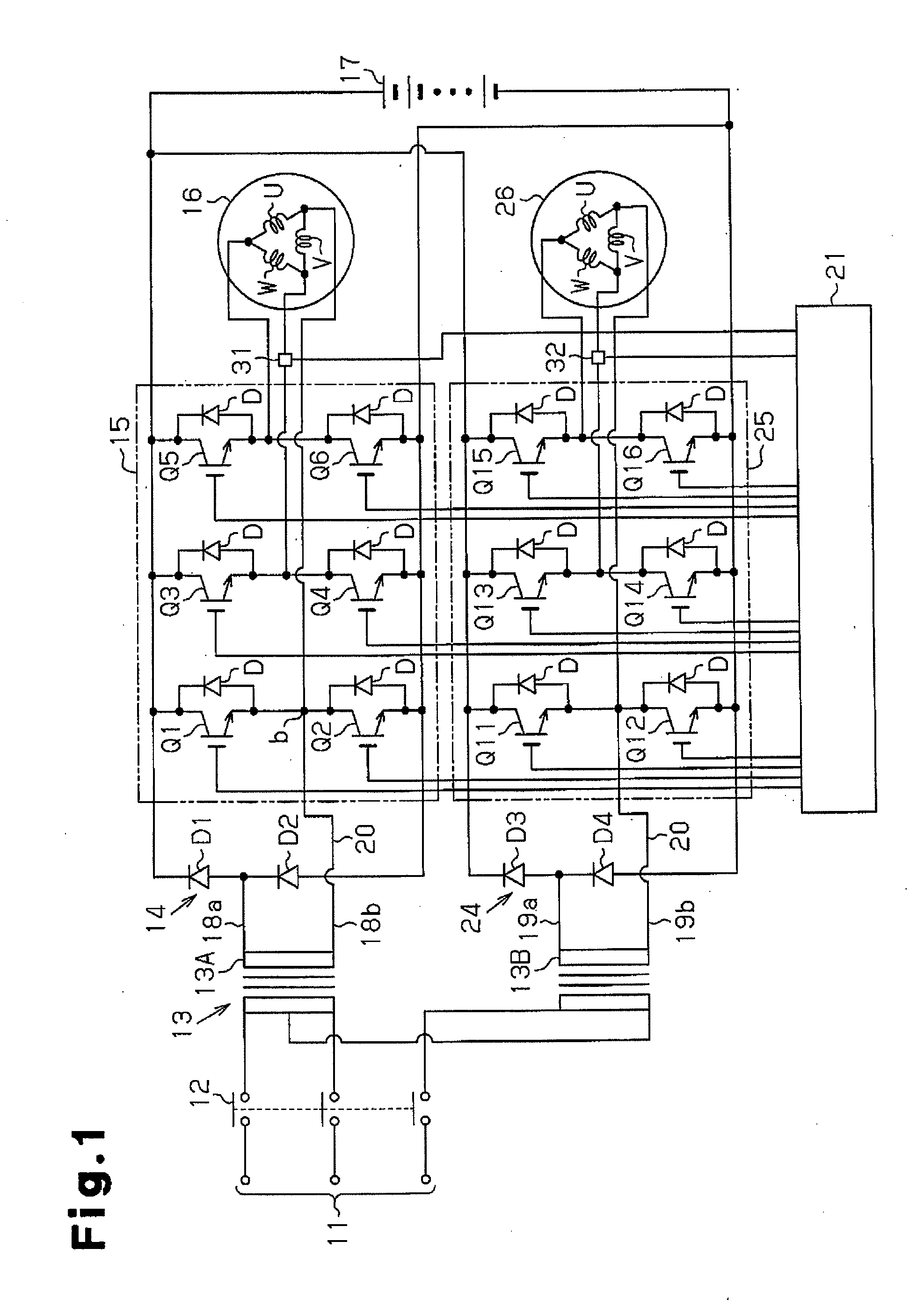Battery charging circuit and charging method
a charging circuit and battery technology, applied in battery/fuel cell control arrangement, dynamo-electric converter control, instruments, etc., can solve the problems of a large number of charger components, insufficient charging or overcharging, and complicated charger configuration
- Summary
- Abstract
- Description
- Claims
- Application Information
AI Technical Summary
Benefits of technology
Problems solved by technology
Method used
Image
Examples
first embodiment
[0025]A battery forklift according to a first embodiment of the present invention will now be described with reference to FIGS. 1 to 6. The motor drive system of the battery forklift includes inverters, and a vehicle-driving motor and a cargo-handling motor, which receive power from a battery and are controlled by the inverters. Coils of the vehicle-driving motor and the cargo-handling motor and switching elements of the inverters are used to form a battery charging circuit. In other words, the battery charging circuit is formed by externally attaching additional parts to the inverters of the motor drive system.
[0026]As shown in FIG. 1, the battery charging circuit includes a Scott connection transformer, which is a single-phase output transformer connected to a three-phase alternating-current power source 11 (for example, a commercial power source such as a 200 V alternating-current power source) via a switch 12. “The single-phase output transformer” refers to a transformer that ha...
second embodiment
[0056]A second embodiment will now be described with reference to FIGS. 7 to 9. The present embodiment is different from the first embodiment in that a circuit used for charging is used to convert the power of a battery to an alternating-current power to be supplied to the primary side of a Scott connection transformer. Like or the same reference numerals are given to those components that are like or the same as the corresponding components of the first embodiment, and the explanations thereof are omitted.
[0057]As shown in FIG. 7, a first rectifier circuit 14 is connected to a vehicle-driving inverter 15. The first rectifier circuit 14 is formed by diodes D1, D2. Transistors Tr1, Tr2 serving as switching elements are connected in parallel with the diodes D1, D2, respectively. A second rectifier circuit 24 is connected to a cargo-handling inverter 25. The second rectifier circuit 24 is formed by diodes D3, D4. Transistors Tr1, Tr4 serving as switching elements are connected in paral...
PUM
 Login to View More
Login to View More Abstract
Description
Claims
Application Information
 Login to View More
Login to View More - R&D
- Intellectual Property
- Life Sciences
- Materials
- Tech Scout
- Unparalleled Data Quality
- Higher Quality Content
- 60% Fewer Hallucinations
Browse by: Latest US Patents, China's latest patents, Technical Efficacy Thesaurus, Application Domain, Technology Topic, Popular Technical Reports.
© 2025 PatSnap. All rights reserved.Legal|Privacy policy|Modern Slavery Act Transparency Statement|Sitemap|About US| Contact US: help@patsnap.com



